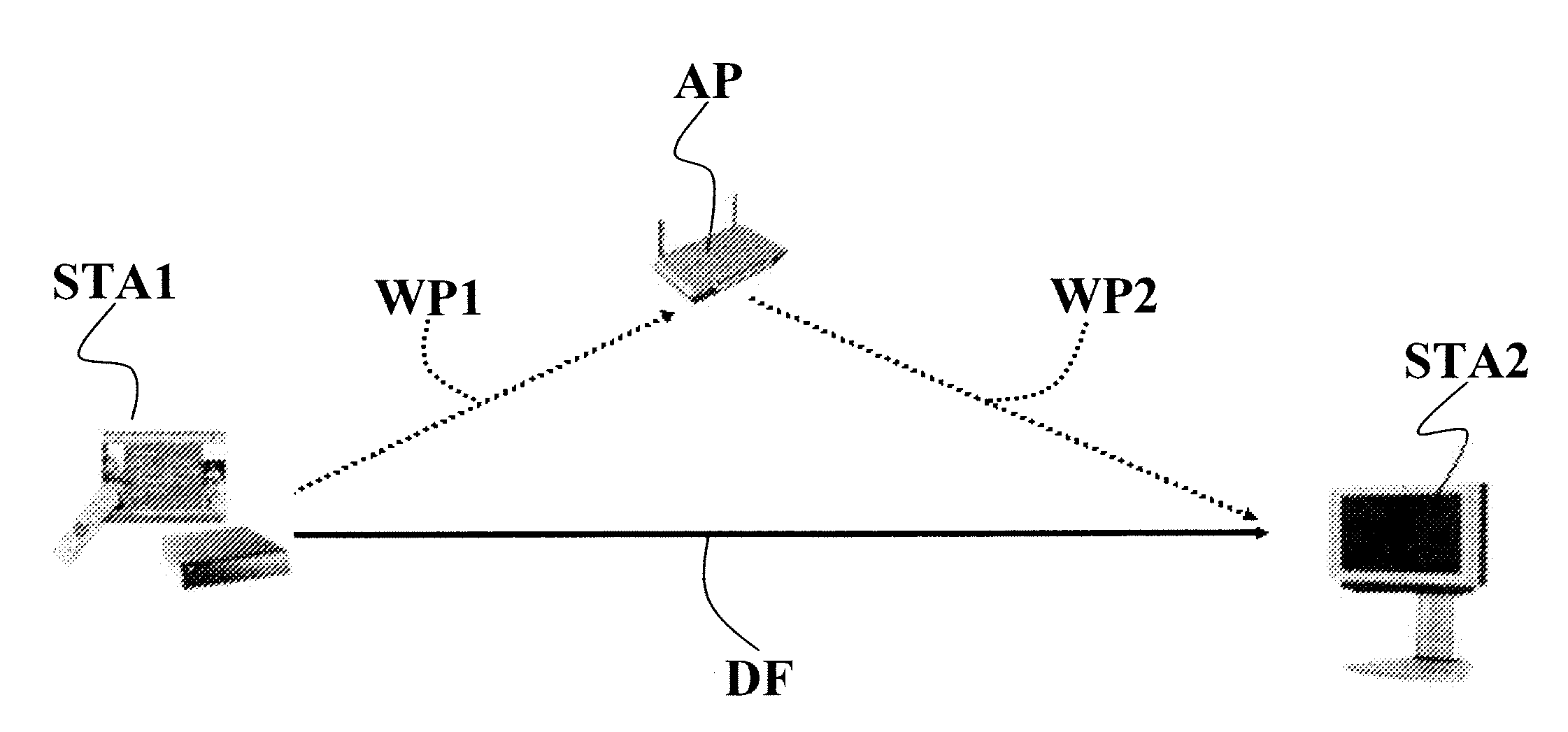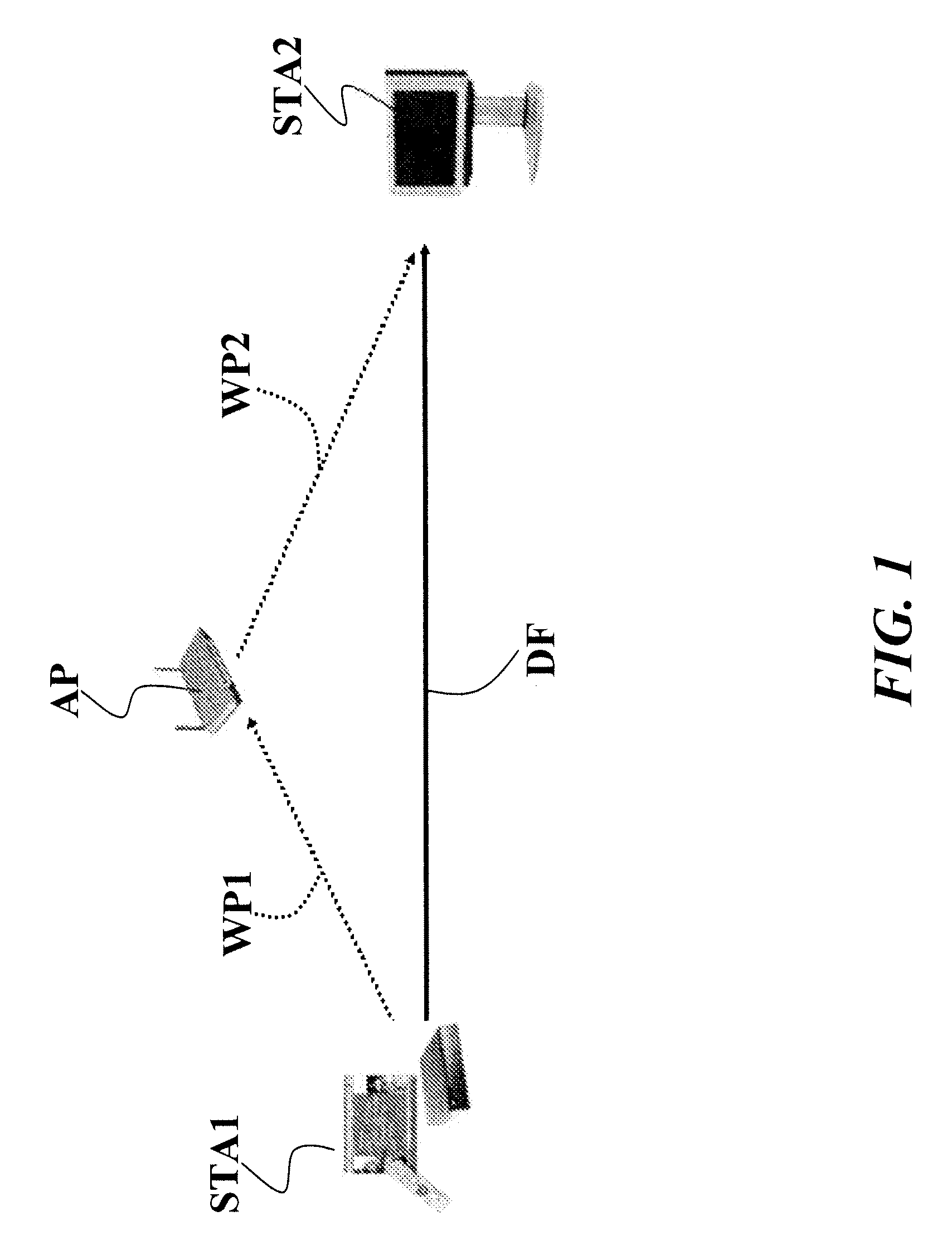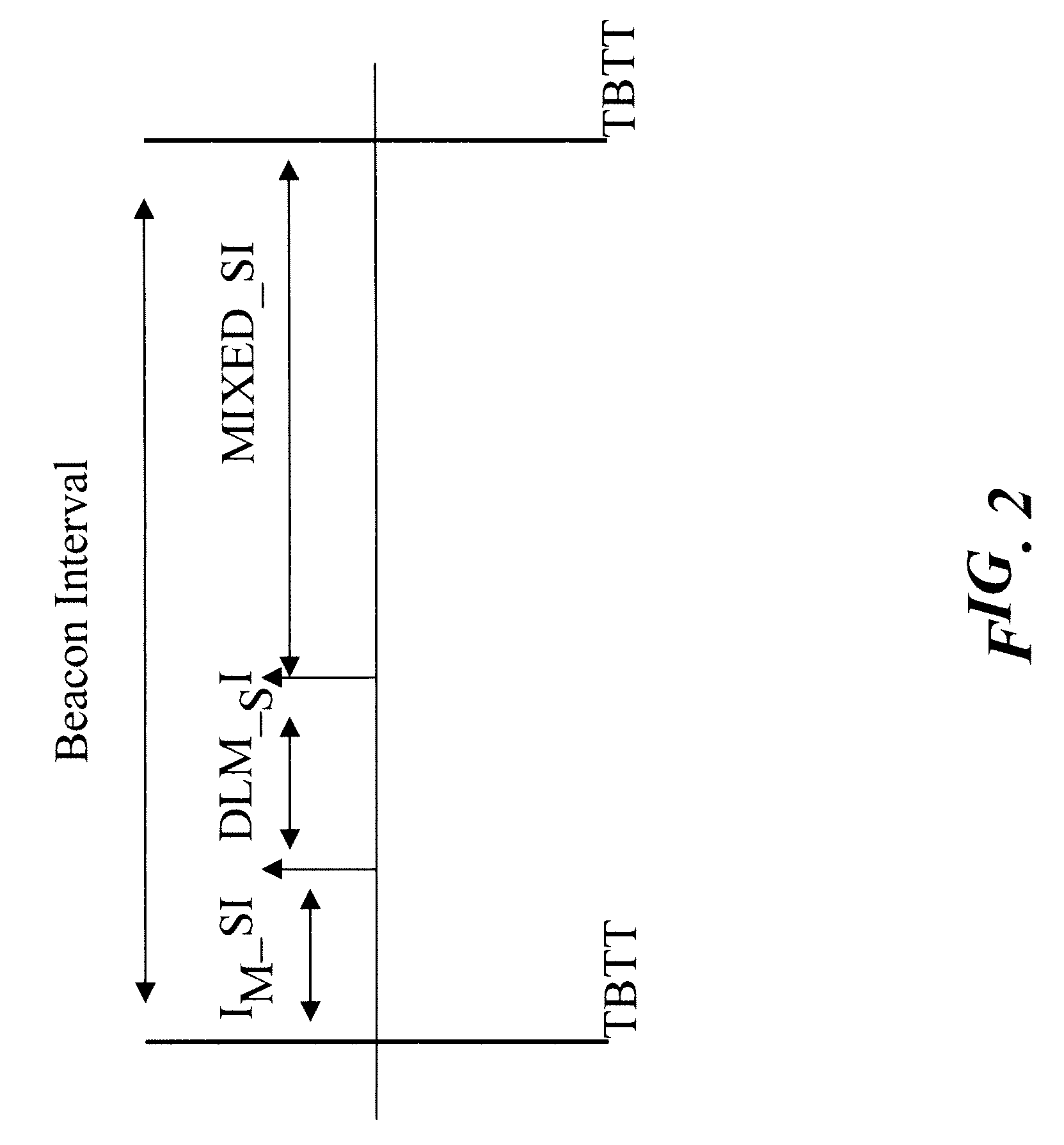Method and system for enabling multi-channel direct link connection in a communication network, related network and computer program product
- Summary
- Abstract
- Description
- Claims
- Application Information
AI Technical Summary
Benefits of technology
Problems solved by technology
Method used
Image
Examples
Embodiment Construction
[0058]As indicated, in a general WLAN scenario, a wireless STA such as STA1 and STA 2 shown in FIG. 1, can operate in one of two possible transmission modes:[0059]Infrastructure Mode (IM): STA1 and STA2 communicate through the AP as in a standard 802.11 BSS; this mode is obviously mandatory if either of STA1 or STA2 is the AP; or
[0060]Direct link mode (DLM): two stations (STA1 and STA2) belonging to the same BSS directly communicate using an ad-hoc connection over an assigned channel.
[0061]The two modes introduce two alternative paths to connect the two BSS stations, namely a two hop path (STA1->AP->STA2) for IM and a single hop path (STA1->STA2) for the DLM.
[0062]The basic idea underlying the arrangement described herein can be briefly explained as follows.
[0063]The main time frame entity of a wireless STA is the beacon interval, shown in FIG. 2. Each beacon interval starts with a beacon frame. This is a management frame that the AP sends periodically, at each Target Beacon Transmi...
PUM
 Login to View More
Login to View More Abstract
Description
Claims
Application Information
 Login to View More
Login to View More - R&D
- Intellectual Property
- Life Sciences
- Materials
- Tech Scout
- Unparalleled Data Quality
- Higher Quality Content
- 60% Fewer Hallucinations
Browse by: Latest US Patents, China's latest patents, Technical Efficacy Thesaurus, Application Domain, Technology Topic, Popular Technical Reports.
© 2025 PatSnap. All rights reserved.Legal|Privacy policy|Modern Slavery Act Transparency Statement|Sitemap|About US| Contact US: help@patsnap.com



